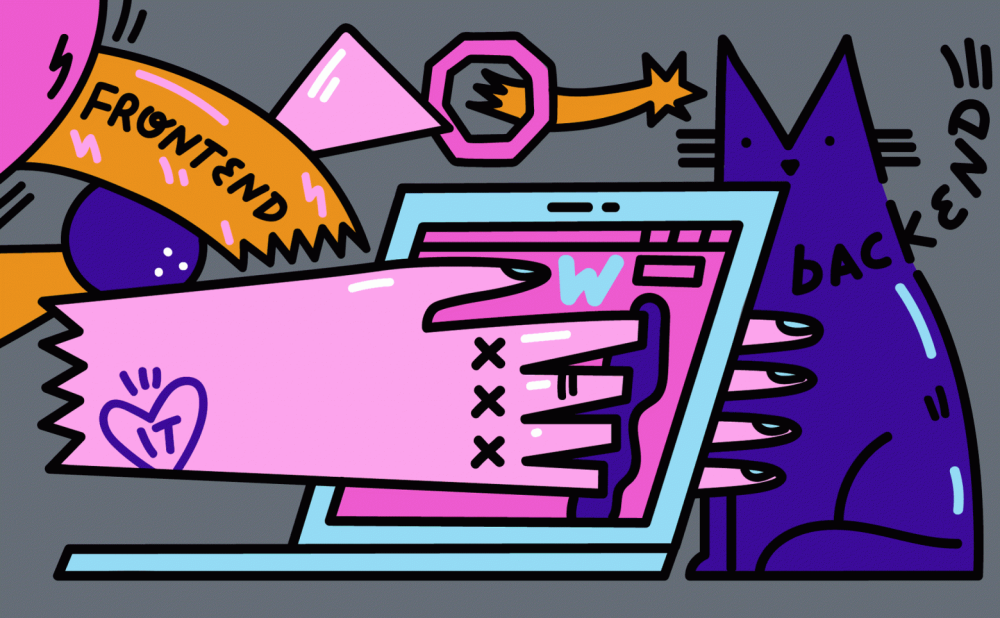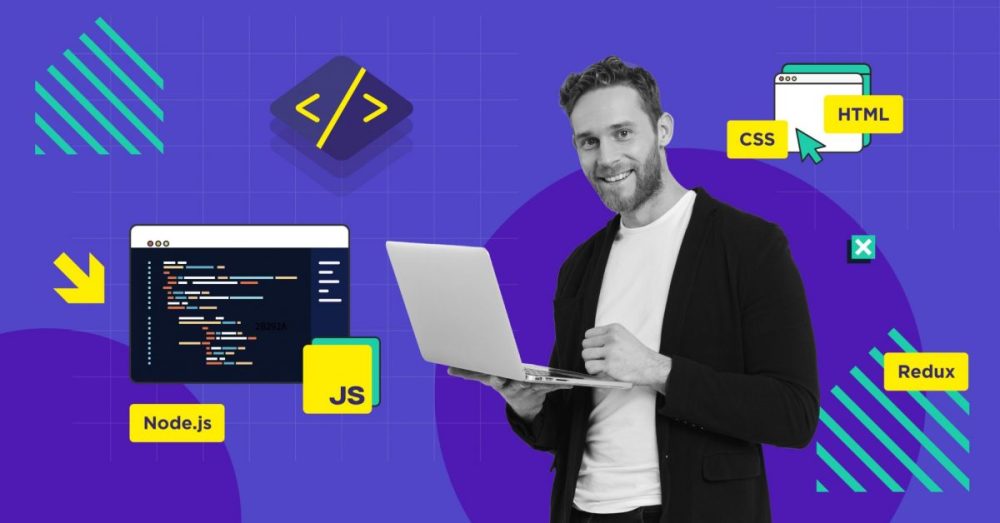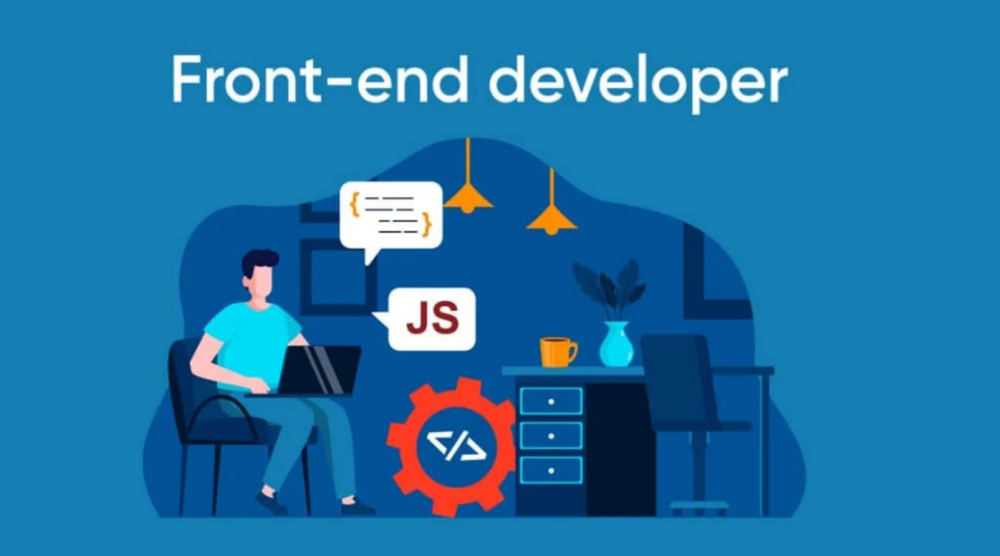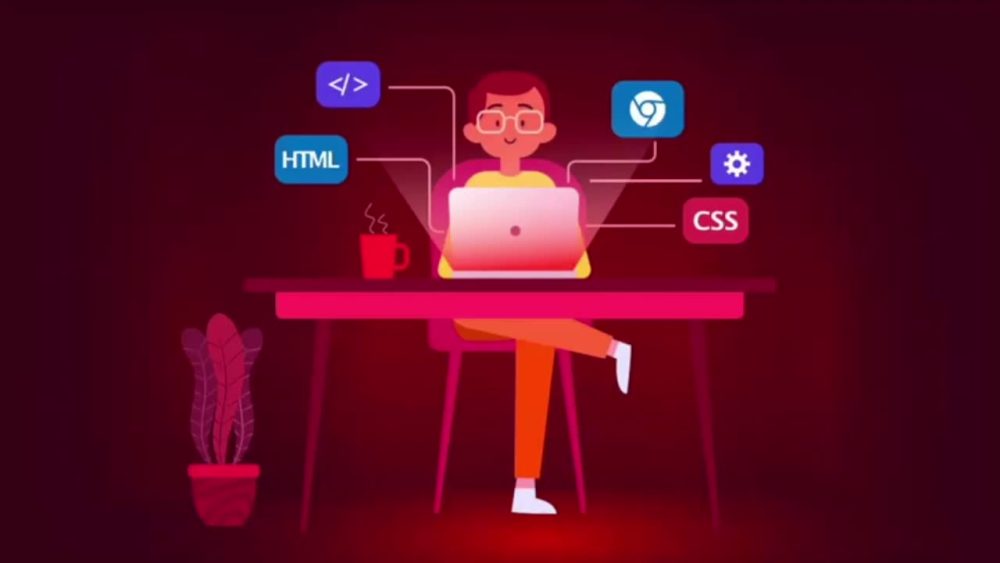Working as a frontend developer online is a conscious choice for many specialists seeking flexibility and freedom. The ability to work from anywhere in the world, choose projects and clients, and not be tied to an office are just a few of the advantages enjoyed by those who have decided to master this profession. But how to find clients? How much can you earn? How to develop in this direction to remain in demand and successful? All this and much more is covered in our article.
Advantages of working remotely as a frontend developer
Autonomy and mobility are a reality for those who choose remote work as a frontend developer. The specialist sets their own schedule, and the choice of projects is limited only by personal preferences and ambitions. This is especially valuable because there is no need to spend time commuting to an office or sitting in a stuffy room from 9 to 18. Remote work allows for full adaptation to one’s biorhythms, which positively affects productivity and satisfaction.
Additionally, remote work opens access to the international market. Frontend developers can easily find clients worldwide, working with customers from different countries. This is not just a way to increase income, but also an opportunity to learn something new, as each country has its own approach and work style. Participation in the international environment enriches experience and opens up more prospects for professional growth.
How to find clients as a frontend developer on freelancing platforms
There are several time-tested strategies for successful client acquisition on freelancing platforms.
The first and perhaps most popular is working as a frontend developer on freelance exchanges. Platforms like Upwork, Freelancer, and Kwork allow you to quickly find orders and start earning. To stand out among competitors, it is necessary to create a strong portfolio. This is a business card that demonstrates not only skills but also a unique style.
The second strategy is working with a personal brand. Creating a portfolio website and actively managing social networks increases recognition and attracts the attention of potential clients. Participation in open-source projects also adds weight to a developer’s reputation, demonstrating interest in development and contribution to the professional community. How to find clients as a frontend developer? Constantly showcase your work, participate in conferences and seminars to make valuable contacts.
Another way to find online frontend developer jobs is to use job aggregators. Platforms like hh.ru offer numerous options that can be sorted by income level, industry, experience, and other parameters.
How much does a frontend developer earn in remote work?
Earnings depend on several factors: level of qualification, project complexity, specialization, and even negotiation skills. On average:
- Junior frontend developers can expect to earn between 80,000 and 120,000 rubles per month.
- Mid-level specialists, who already have experience working on large projects, can earn 150,000 to 200,000 rubles and above.
- Professionals with extensive portfolios and established connections with clients can earn upwards of 250,000 rubles.
Remote work as a frontend developer brings not only money but also the opportunity to choose interesting projects. Thanks to the global market, you can find orders with high pay and unique tasks that will help not only earn but also develop professionally.
How to become a successful frontend developer: education and development
Success in the profession requires continuous learning and self-improvement. The frontend developer profession involves continuous development, as technologies change at an incredible pace. To start, it is necessary to master basic languages: HTML, CSS, and JavaScript. After that, it is important to delve into popular frameworks such as React, Vue, or Angular.
Remote learning in frontend development is one of the most convenient ways to gain the necessary knowledge. There are plenty of online platforms (Coursera, Udemy, Skillbox) offering courses for all levels. Alongside learning, it is important to practice – develop something of your own, participate in open projects, and gain experience.
To become a successful frontend developer and land your dream job, it is also important to develop soft skills. The ability to work in a team, plan time effectively, and communicate with clients directly influences career growth and success in this profession.
Prospects of working as a frontend developer online
The future looks very optimistic. The demand for coders continues to grow, and remote work is becoming the norm. In the coming years, frontend developers will become even more in demand due to the development of certain areas: Web3, artificial intelligence, and AR/VR technologies.
Remote work in web development in the cryptocurrency and blockchain sphere looks particularly promising. More and more companies are looking for specialists who can adapt their projects to new technologies. This requires not only knowledge of modern frameworks but also a deep understanding of how web applications work and which solutions are suitable in each case.
Working as a frontend developer from home allows for flexible integration of personal life and career, without limiting oneself to the boundaries of one country. The opportunity to work with international clients opens doors to new, more complex and interesting projects.
Conclusion
Working as a frontend developer remotely is a real opportunity to change your life for the better, start earning doing what you love, and have complete freedom in choosing working conditions. It is important to remember that the profession requires continuous development and a willingness to learn new things.
Try to explore new technologies, improve your skills, and practice to reach a new income level and experience the long-awaited career growth.



















